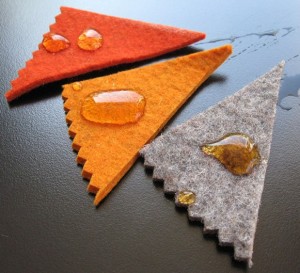Tea is widely used as a dye and its stains can be, well, a bugger to get out of a nice white shirt for instance. Since cleaning and care is a common question about these wool felt tea cosies I thought I’d re-post some cleaning tests I did a few years ago.
One can always take it to a dry cleaner, but some simple, quick action is really the best and easiest way to keep your wool felt tea cosy looking fresh and new:
In the name of science herewith a test run of tea stains on some samples of the felt used to make the flock’s tea cosies and a step by step on cleaning.
Firstly, felt is created by washing and mashing and washing and mashing wool so that its fibres all wrap around each other and become the lovely dense mass that we know and love. So don’t pop the felt tea cosy into the wash — either hand or machine — because it will continue the felting process. (Hands up all of us who’ve shrunk that beautiful wool sweater by putting in the washing machine.)
1. WOOL FELT RESISTS LIQUID
The dense wool naturally resists liquid, in this case a teaspoon of fine high-grown ceylon tea.
Note how the felt fabric naturally resists the liquid? Now’s the time to quickly blot it up.
2. BLOT THE LIQUID
Use a clean white paper towel or rag and gently blot the liquid. As the stain is absorbed into the paper towel, keep moving to a clean part of the towel so you’re not re-transferring the tea into the felt.
It all comes off with no staining evident.
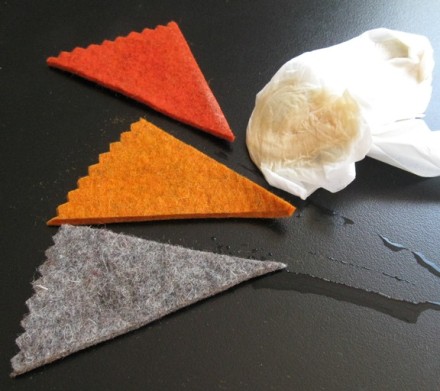
3. HEAVY TEA STAINING
With time and movement the tea will be absorbed by the felt fabric. So in the interest of science (and with some effort) some strong black tea was rubbed in to the wool felt samples. The Cornflower Blue sample was added for this test since it’s a paler colour.
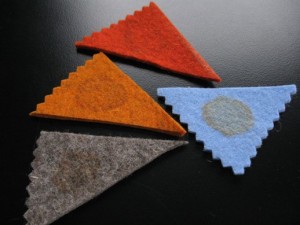
4. SPOT CLEANED AND BLOTTED
The tea spots were lifted on the Tangerine and Burnt Orange by firmly blotting with tepid water using a clean white paper towel. No soap or dish detergent was used — just water.
As the stain is absorbed into the paper towel, keep moving to a clean part of the towel so you’re not re-transfering the tea into the felt. Once clean, the samples were blot-dried using another clean paper towel. I used paper towels because they were handy and white, but a well used clean rag — well used so that all sizing is out of it and it’s super-absorbent — works too, of course.
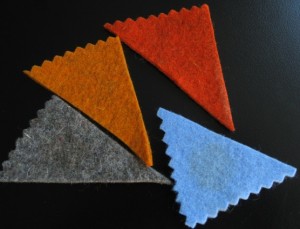
As you can see, there are no spots visible on the Tangerine and Burnt Orange samples, but there are spots faintly visible on the Industrial felt (which is 80% wool) and the Cornflower Blue samples.
5. SPOT CLEANED WITH WATER, SALT AND PEROXIDE BLEACH
So I went to work on the Industrial and the Cornflower Blue samples.
The Industrial came clean with just a bit more blotting with tepid water and clean white paper towel.
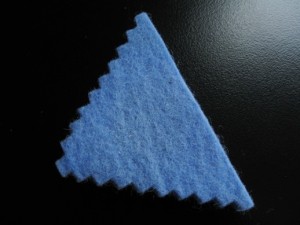
On the Cornflower Blue I tried i) baking powder (didn’t work), ii) salt (worked a bit) and finally iii) some hydrogen peroxide bleach. And it worked! I put about half a teaspoon on the sample and let it soak for a few minutes, then blotted it as dry as I could with clean white paper towel and let it dry on the windowsill.
Note: I used no soap or detergent in this test, either of which would have required rinsing which means more work and more wear on the felt finish.
THE UPSHOT
- Felt is naturally stain resistant (although not stain proof)
- Quickly blotting with a clean white paper towel or rag takes care of most accidents
- For settled stains, gently infuse the spot with tepid water and firmly blot with a clean white rag or paper towel. As the stain is absorbed into the paper towel, keep moving to a clean part of the towel so you’re not re-transferring the tea into the felt. When clean, blot dry (press firmly) with clean dry material. This generally does the trick.
- For the pale cosy colours I’ve had success with short (2 minute) spot-infusions of peroxide bleach (never use regular bleach) followed by gently blotting with tepid water, and finally blotting dry.

